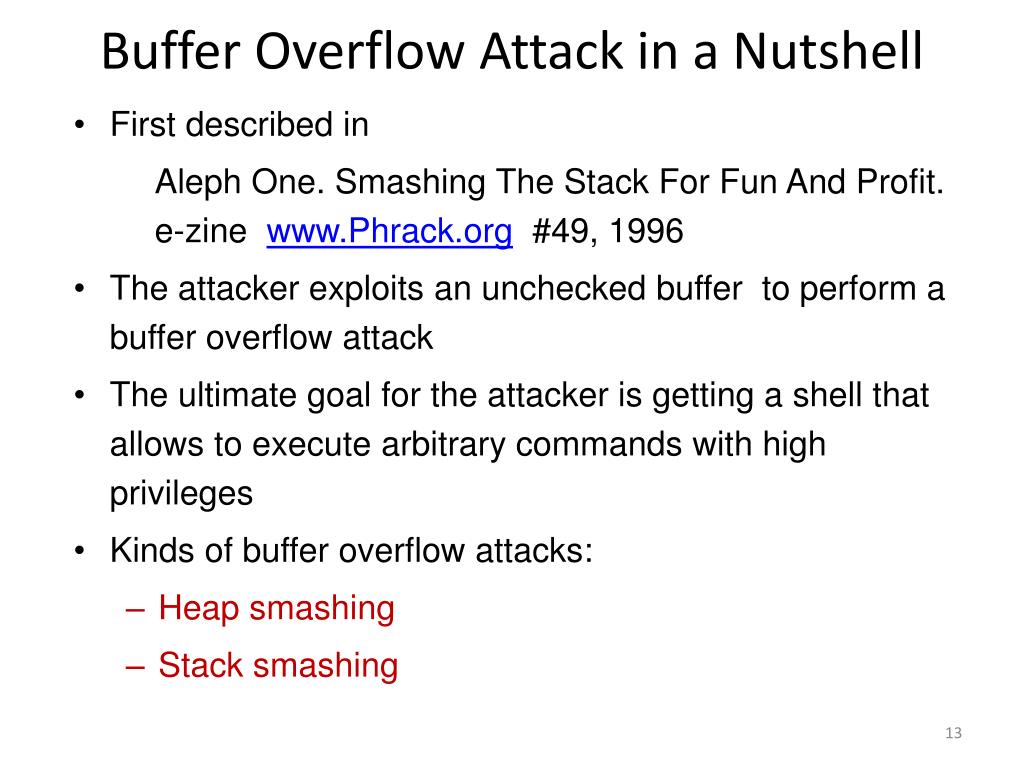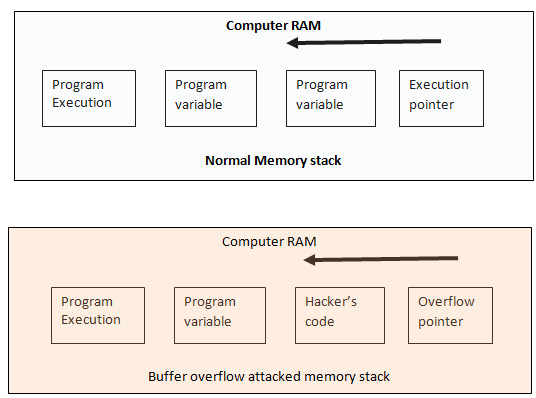

How can Buffer Overflow Attacks be Used against Web Applications?
#BUFFER OVERFLOW ATTACK HISTORY CODE#
Commonalities between the various types include a programming code that relies on external data to control application behavior, complex programming architecture, and dependence on properties of data enforced outside the programming code’s immediate scope. These include the format string attack, off-by-one error, and heap buffer overflow. Other Types of Buffer OverflowsĪ number of other buffer overflow attacks have emerged. At the program architecture level, a buffer overflow vulnerability normally occurs when an attacker successfully finds a violation of the programming assumptions that error checking did not catch or when there is faulty memory manipulation. The information that the attacker sent will set the return point’s value to transfer control to the computer malware or other malicious code stored in the attacking information. The information on the call stack will be overwritten to include the return pointer of the function or method. In the classic exploit, the person attacking the program or system sends information to the targeted application that is stored in an undersized buffer.

Once identified, the vulnerability can infect the computer with malware, putting it at risk of attack.

Although it is difficult to discover a buffer overflow vulnerability, a number of attackers have identified buffer overflow vulnerabilities in a variety of products and web resources. They often attack new web and stand-alone applications as well as older programs.
#BUFFER OVERFLOW ATTACK HISTORY SOFTWARE#
Why are Buffer Overflows Dangerous?īuffer overflows are best known from the software security vulnerabilities they create. When information is stored outside the allocated block of memory, the program can crash or computer malware can infect it. The type of information can vary from an array of integers to objects. In the classic case, a buffer is a sequential memory section that is assigned to contain information. A buffer overflow occurs when a computer application attempts to assign data to a data structure past the point that the structure is designed to store information.


 0 kommentar(er)
0 kommentar(er)
